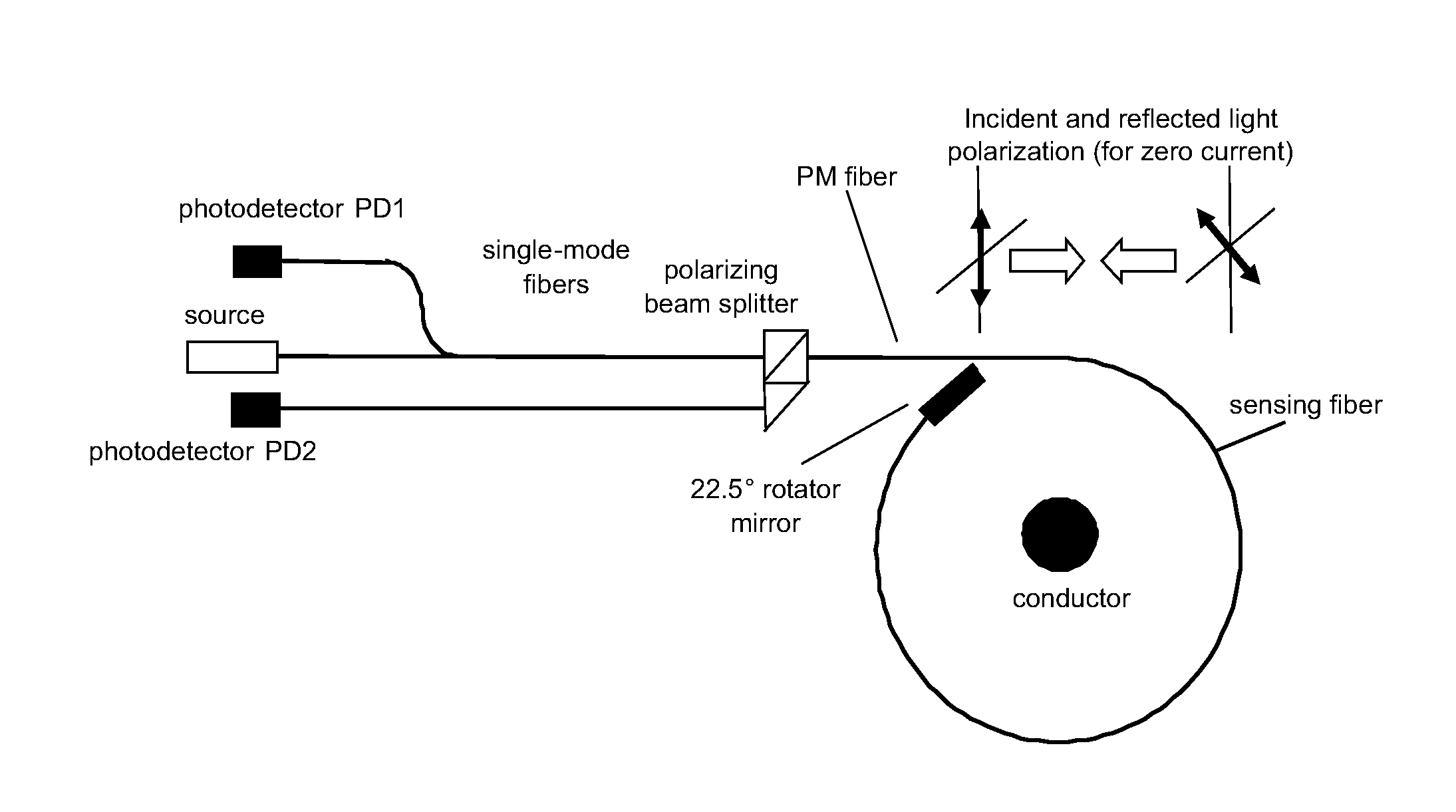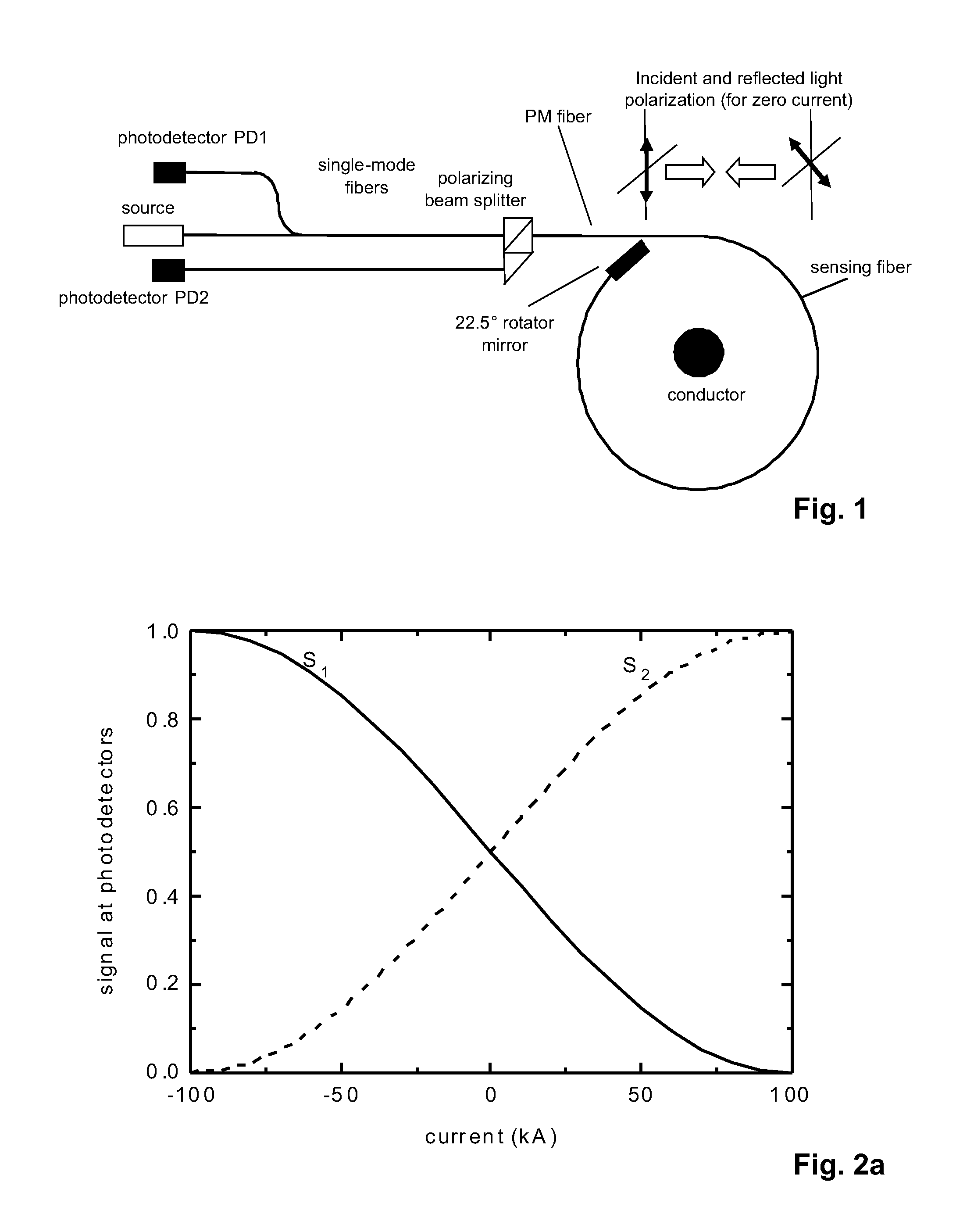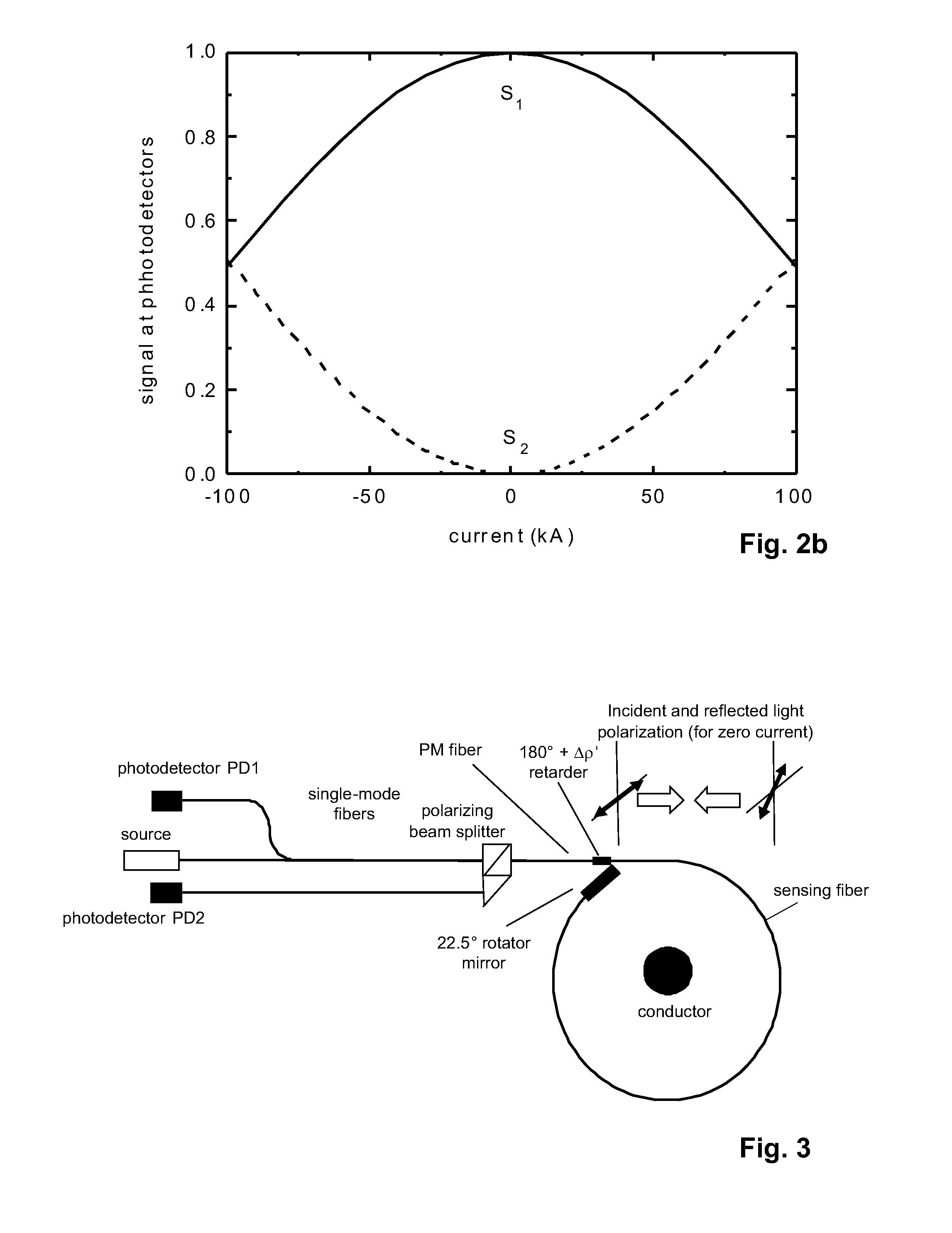Temperature Compensated Fiber-Optic Current Sensor
a technology of fiber-optic current and sensor, applied in the direction of electrical testing, measurement devices, instruments, etc., can solve the problems of severe reduction of the performance of the basic sensor configuration, the sensor of fig. 1 may not be suitable for substation applications, and the temperature change cannot be distinguished, so as to reduce the influence of the bend-induced birefringence
- Summary
- Abstract
- Description
- Claims
- Application Information
AI Technical Summary
Benefits of technology
Problems solved by technology
Method used
Image
Examples
Embodiment Construction
[0049]Definitions
[0050]Terms of the type “substantially circularly polarized light” and similar used herein designates light that can be generated by a superposition of two collinear, coherent, orthogonal, linearly polarized light waves of equal amplitude and a mutual phase shift of 90°+K·180°+Δα, with K being an integer number and Δα being between −30° and +30°, in particular between −15° and 15°. (Δα=0° corresponds to perfect circular polarization.)
[0051]Terms of the type “substantially linearly polarized light” and similar used herein designates light that can be generated by a superposition of two collinear, coherent, orthogonal, linearly polarized light waves of equal amplitude and a mutual phase shift of K·180°+Δα, with K being an integer number and Δα being between −30° and +30°, in particular between −15° and 15°. (Δα=0° corresponds to perfect linear polarization.)
[0052]1. Prior Art Approach
[0053]The basic sensor layout of the sensor underlying the disclosed invention is dep...
PUM
 Login to View More
Login to View More Abstract
Description
Claims
Application Information
 Login to View More
Login to View More - R&D
- Intellectual Property
- Life Sciences
- Materials
- Tech Scout
- Unparalleled Data Quality
- Higher Quality Content
- 60% Fewer Hallucinations
Browse by: Latest US Patents, China's latest patents, Technical Efficacy Thesaurus, Application Domain, Technology Topic, Popular Technical Reports.
© 2025 PatSnap. All rights reserved.Legal|Privacy policy|Modern Slavery Act Transparency Statement|Sitemap|About US| Contact US: help@patsnap.com



